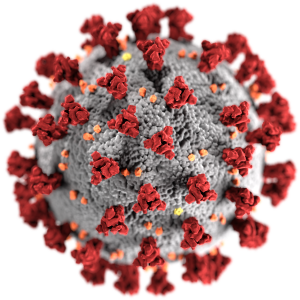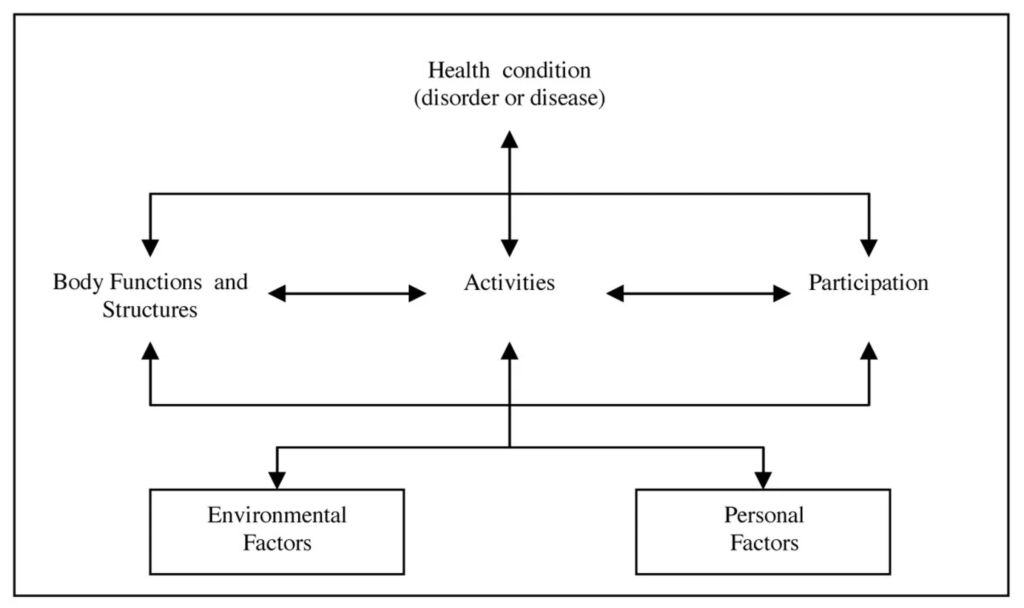About This Book
By Danielle Hitch

Welcome to this online textbook about enabling and optimising recovery from COVID-19. The aim of this book is to provide health professionals and other caregivers with improved knowledge and skills for working with people recovering from COVID-19 infection or experiencing Long COVID. The information in this chapter is designed to help you get the most out of your reading experience.
This online textbook is an Open Education Resource (OER)
An OER is an educational resource licensed to allow copying, re-distribution, and derivative works. It contains materials that contribute to an educational course, other studies and/or continuing professional development. There are many reasons to incorporate OERs into educational activities, including;
- affordability – every student or participant has access to the same learning materials
- access and accessibility – readers have permanent free access to resources in multiple formats
- equity – readers from low socio-economic, geographically dispersed or ethnically diverse backgrounds can gain equal access to quality educational materials
- retention – research indicates OER users are more likely to complete their studies than those using commercial texts
- deeper learning – OERs enable customised curriculum, which promotes deeper engagement for readers
- diversity – OERs can reflect diversity by including gender-neutral language, culturally diverse examples and first nations representation and recognition.
OERs can take multiple formats, including courses, modules, course materials, textbooks (like this one), public domain books, audiobooks, videos, podcasts, interactive simulations, learning objects and primary sources. They are licenced for use under Creative Commons licences, which enable sharing and adaptation of existing resources worldwide.
The content aligns with the International Classification of Function, Disability and Health (ICF).
The International Classification of Function, Disability, and Health (ICF) [1] is a way of categorizing health and disability developed by the World Health Organization (WHO) that considers physical, psychological, and social factors that affect a person’s well-being. The ICF helps healthcare professionals, policymakers, researchers, and others communicate about health and disability using the same language and framework, making it easier to understand and address complex health issues [2]. The figure below illustrates the key concepts of the ICF, and their proposed relationship to each other.

As shown above, the ICF consists of two parts: Functioning and Disability (body functions and structures, activities and participation) and Contextual Factors (environmental and personal factors). The parts of this framework are reflected in the sections of this book but while content is arranged according to section, every chapter includes elements that touch on all of these domains.
Expect progressive publication with regular updates.
Another advantage of OERs is their ability to be rapidly and repeatedly updated. Given how quickly knowledge about COVID-19 has developed [3], this enables responsive content that can be easily revised as new evidence comes to light. New and updated chapters will be added periodically and listed in the Version Information chapter. Be sure to cite the correct version in all attributions, as page and chapter numbers will change with additional or revised content.
This book has been co-authored by people with Long COVID (lived experience experts).
The editorial team are committed to founding the content of this textbook in the lived experience of patients. All personas and some chapters in the textbook were co-authored by the editorial team and a lived experience expert. Other chapters (written by researchers or clinicians) have been peer-reviewed by lived experience experts. Our intention is to ensure this textbook is a valuable, relevant and credible resource for anyone wanting to adopt a patient-centred approach to working with people recovering from COVID-19.
Choose your own adventure!
The textbook encourages flexible reading rather than a linear approach. This means that you can read the sections in any order that you prefer, and you can skip over sections that you are already familiar with. You may find some material in multiple chapters (such as an introduction to common symptoms of Long COVID), because we anticipate some readers will only access certain chapters. You can also return to sections you have already read to review the content. All learning and other activities are optional and are designed to support you in translating your new learning into your specific practice context. They can be completed alone or in a group with colleagues. In short, this textbook is really whatever you want to make it!
Textbook Features
This textbook is hosted on the Pressbooks platform and offers a range of features to enhance your reading experience.
Another key feature of this textbook is co-authored personas, which are the basis of many reflective and learning activities. For more information about these personas, please read this section.
Join Us.
Collaboration is a key feature of OERs, and the editorial team would welcome chapters and other contributions by researchers, clinicians and lived experience experts to build the textbook over time. Chapter authors retain full copyright over their intellectual property, and a formal memorandum of understanding is created to ensure transparency. Generally speaking, prospective authors are asked to submit a brief proposal outlining the topic and objectives of their potential contribution and how it aligns with the broader goals of the resource. Once approved and reviewed by the editorial team, you will likely receive more specific guidelines and instructions on developing your content and peer review requirements. If you want to join us as a co-author, please email us covidtextbook@deakin.edu.au.
- World Health Organisation. (2001). International classification of functioning, disability, and health: ICF. World Health Organization. ↵
- World Health Organisation. (2002). ICF Beginner's Guide: Towards a common language for functioning, disability and health. World Health Organization ↵
- Lipworth, W., Gentgall, M., Kerridge, I., & Stewart, C. (2020). Science at Warp Speed: Medical Research, Publication, and Translation During the COVID-19 Pandemic. Journal of bioethical inquiry, 17(4), 555–561. ↵
The physiological functions of body systems (including psychological functions). (ICF, WHO)
Anatomical parts of the body, such as organs, limbs and their components. (ICF, WHO).
execution of a task or action by an individual
Involvement in a life situation (ICF, WHO)
The physical, social and attitudinal environments in which people live and conduct their lives. (ICF, WHO)
individual characteristics that influence a person's functioning, such as age, gender, race, education, and personality

